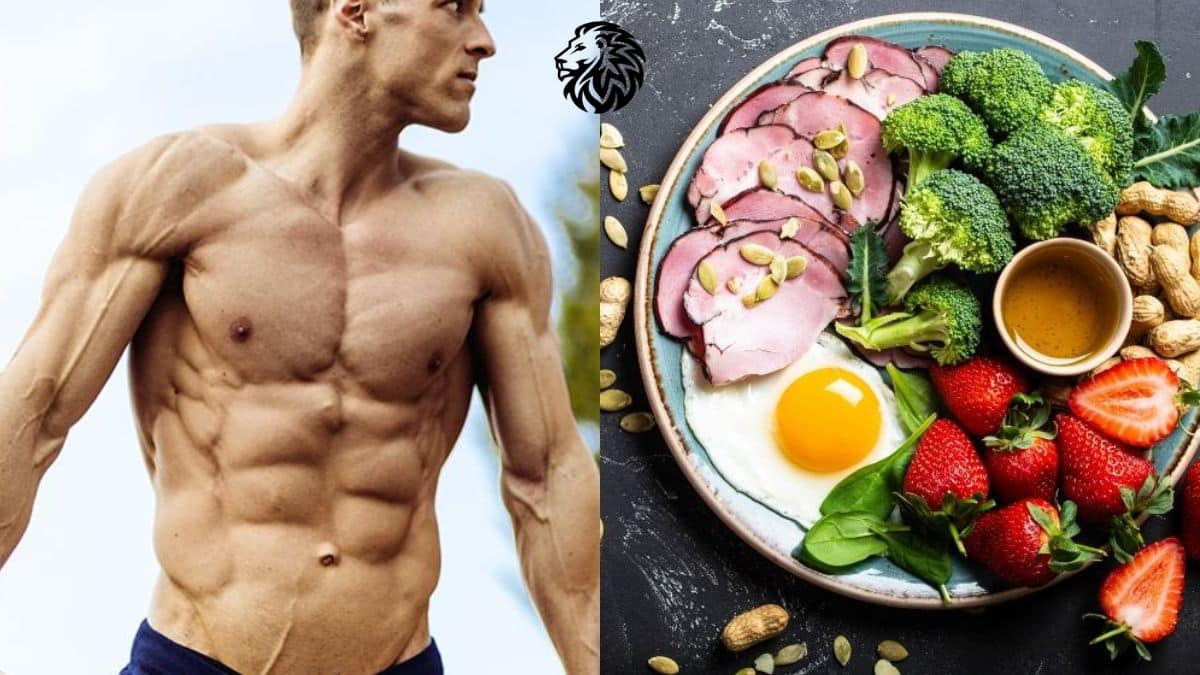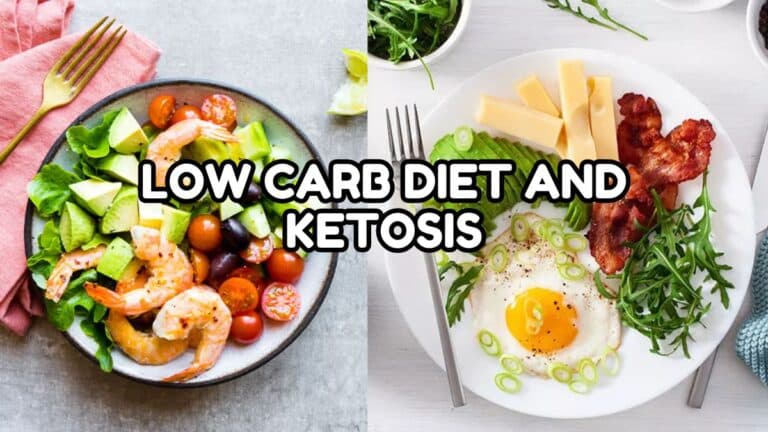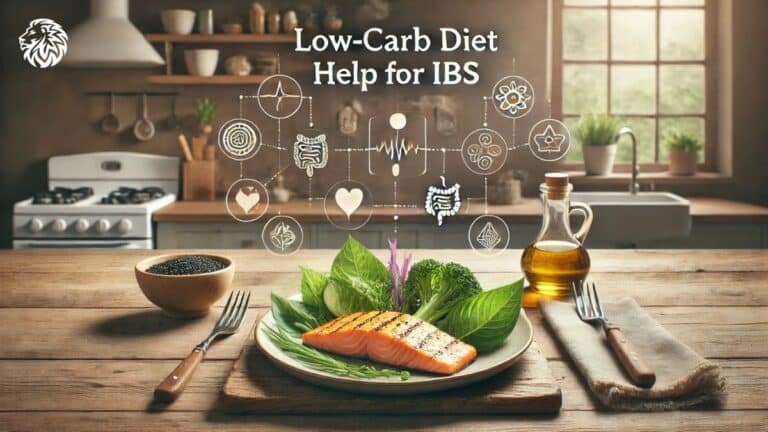Understanding Low-Carb Diets
Benefits of Low-Carb Diets
Jumping into a low carb diet isn’t just a fad, especially for athletes looking to hit that sweet spot in their game. Let’s dive into why this diet might just be your new best friend.
Weight Loss
A lot of folks have found that ditching carbs can lead to serious weight loss compared to their buddies on low-fat diets. It’s not just cutting calories or carbs—it’s likely tied to how low-carb diets mess with hormones that manage hunger and fat storage.
| Diet Type | Weight Loss (12 Weeks) |
|---|---|
| Low-Carb Diet | 7-10 lbs |
| Low-Fat Diet | 5-7 lbs |
Improved Body Composition
Shedding body fat isn’t just about looking good in a swimsuit. For athletes, a leaner frame can mean more nimble movements and extra strength (PubMed).
Enhanced Mental Focus
Slashing carbs might boost your mental sharpness—a huge plus during those high-pressure competitions.
Better Blood Sugar Control
Low-carb diets can keep blood sugar on an even keel, so you’re not facing energy crashes midday. If you’re curious, check out our piece on low carb diet and diabetes.
Components of a Low-Carb Diet
A low-carb diet isn’t about starving yourself of everything good in life. It’s about cutting back on the carbs while loading up on protein and good fats.
Carbohydrates
You wanna cut down on carbs but not starve yourself. Low-glycemic veggies like spinach and broccoli are your best buddies here—packed with nutrients without sending your blood sugar on a rollercoaster.
| Food Category | Foods to Include |
|---|---|
| Vegetables | Spinach, Kale, Broccoli |
| Fruits | Berries (in moderation) |
| Grains | Limited or excluded |
Proteins
Protein’s your main guy for keeping muscles in shape and ready for action. Aiming for 20–40 grams of protein every few hours will keep those gains coming (PMC).
| Protein Sources | Serving Size | Protein (g) |
|---|---|---|
| Chicken Breast (grilled) | 4 oz | 35 |
| Salmon | 4 oz | 25 |
| Tofu (for vegetarians) | 1/2 cup | 10 |
Fats
Don’t skimp on healthy fats—they’re key for energy and snagging those important nutrients. Think avocados, nuts, and a splash of olive oil.
| Fat Sources | Serving Size | Fats (g) |
|---|---|---|
| Avocado | 1 medium | 21 |
| Almonds | 1 oz | 14 |
| Olive Oil | 1 tbsp | 14 |
Grasping these components can help you whip up a killer low carb meal plan that hits all your athletic ambitions. Looking for more grub ideas? Check out our list of the best low carb foods and low carb recipes.
Low-Carb Diets for Weight Loss
So, you’re toying with the idea of a low-carb diet, huh? Let’s chat about what that could mean for shedding some pounds. Both the initial drop in numbers on the scale and longer-term effects are important to keep in mind if you wanna know if this diet’s the real deal.
Impact on Body Weight
Low-carb diets might just be your best bud when it comes to quick weight loss. Studies show folks often lose more weight faster with lower carbs than if they just cut fat (PubMed). By swapping carbs for more tastier fats, you might fine-tune your body composition quicker than you’d think.
| Diet Type | Fat You Might Shed (lbs) in 6 Months |
|---|---|
| Low-Carb Diet | 10-15 |
| Low-Fat Diet | 5-10 |
Expert numbers suggest cutting 500 to 750 calories a day can help you drop 1 to 1.5 pounds a week (Mayo Clinic). Those focusing on carbs tend to see faster results initially compared to trimming fats. For some cool insights on what else goes with this diet, check out our guide on low carb diet benefits.
Short-Term vs. Long-Term Results
In the short run, low-carb diets are like that eager best friend pulling you over the finish line first. People tend to see speedy changes, especially in the first year. There’s talk of a ‘metabolic advantage’ too, burning up to 300 more calories each day on a low-carb plan than a high carb one of the same calorie count.
| Time Frame | On Low-Carb | On High-Carb |
|---|---|---|
| 6 Months | 8-15 lbs down | 5-8 lbs down |
| 12 Months | 12-20 lbs gone | 10-12 lbs gone |
Thanks to NCBI Bookshelf
But don’t get too comfy with short-term wins. Over a year or two, the edge low-carb diets offer tends to cool off. Weight sort of plateaus, lining up closer with other diets. This initial drop might be more about losing water weight alongside fat – which levels out eventually.
Long-term success usually calls for a balanced approach with a mix of wholesome foods. Tossing in some exercise and maybe having a healthcare chat can help keep things steady. For tips on nailing that balance, check our low carb diet for weight loss resource.
By weighing short-term perks against long-term effects, you can better decide if this diet is your match made in heaven. Ensuring a good nutrient intake and mixing in some exercise can take your efforts even further — see how by visiting our guide on low carb diet and exercise.
Low-Carb Diets and Blood Sugar Management
Managing Blood Sugar Levels
So, you’re thinking about cutting back on carbs to better handle your blood sugar, huh? Good call! Dialing down the starchy stuff can keep your sugar levels playing nice and steady. Especially if you’re dealing with diabetes, this might just be your ace in the hole.
Imagine your plate packed with colorful, non-starchy veggies, juicy proteins, and healthy fats, while giving the cold shoulder to sugary treats, pasta, and that stack of white bread (Healthline). Take a peek at this mini carb hit parade:
| Food Item | Carbs (in grams per serving) |
|---|---|
| White Bread | 13 |
| Pasta | 31 |
| Non-Starchy Veggies | 5-10 |
| Chicken Breast | 0 |
| Olive Oil | 0 |
Being on Team Low-Carb when you’ve got diabetes means keeping tabs on those sugar levels and sticking to what the doc orders (Healthline).
Improving Health with Low-Carb Eating Patterns
Jumping on the low-carb wagon isn’t just about shedding pounds or keeping glucose under control—you’re looking at a whole health sweep! Watch things like blood pressure and cholesterol get in line, along with bumping down inflammation.
- Piling on the protein, about 20-40 grams every few hours, can work wonders for your body and how it performs (PMC).
- Non-starchy veggies ain’t just for the bunnies—they’re low on carbs but rich in the good stuff, like fiber, which helps keep your insides happy.
- Add in fats from things like olive oil, avocados, and nuts to stay full longer and get those fatty acids your body loves.
Keeping sugar spikes at bay? That’s gonna mean fewer cravings trying to hijack your day and steadier energy from sunrise to sunset. Wanna dive deeper? Explore more tips on a healthy low-carb life.
By trimming the carbs and loading up on nutrient-rich eats, you’re not just regulating sugar; you’re setting up a rock-solid low-carb meal plan. Dig into more about how low-carb diets affect your body in our reads on low carb diet and diabetes and low carb diet and cholesterol.
Low-Carb Diets for Athletes
So you’re an athlete toying with the idea of cutting carbs, huh? Before you take that leap, let’s chew over how ditching the dough might tweak your regimen and how many carbs your hustle really needs.
Effects on Athletic Performance
Let’s not sugarcoat it: carbs are the go-to juice for folks breaking a sweat. When your muscle fuel runs low ‘cause carbs are in short supply, you’re asking for a tired-and-slow day on the field. Especially in muscle-crushing sports like CrossFit, fewer carbs equals slugging through workouts. There’s a reason folks eating more than 40% of their food as carbs leave the low-carb gang in the dust (NASM).
Going keto to torch more fat while you work out seems cool, but here’s the catch—it doesn’t always pan out. Results swing, and the idea of keeping it up begs the question: worth it? Not always (NASM).
Carb Requirements for Different Intensities
How many carbs you need isn’t a one-size-fits-all deal. If your workouts are more Netflix than ninja warrior, you’re fine with fewer carbs. But if you’re going hardcore, you’ll want more fuel for the fire.
| Level of Activity | Carbs Needed (grams/day) |
|---|---|
| Light to Moderate Exercise | 3-5 g/kg body weight |
| Moderate to High-Intensity Exercise | 5-7 g/kg body weight |
| Very High-Intensity Efforts | 6-10 g/kg body weight |
And those ultramarathoners—sure, they can skimp on carbs on long hauls, but when it’s crunch time, less isn’t more (NASM).
Choosing Your Carbs
Grabbing carbs from colorful goodies like veggies and fruits isn’t just good for the soul; it’s super for your muscles too. Take Montmorency cherries, packed with anthocyanins. They’re heroes in tackling inflammation and muscle grumps. Tart cherry juice? Let’s just say, it’s your muscle’s best friend after grueling workouts, especially for the master’s athletes amongst you (NASM).
Got questions on fine-tuning your low-carb path? Check our pages on best low carb foods and low carb snacks. Also, don’t skimp on the read about low carb diet benefits to get the whole scoop on this food philosophy before you dive in.
Transitioning to a Low-Carb Diet
Strap in, because switching to a low-carb diet ain’t just for the afternoon snackers—athletes, listen up! We’re diving into why your body’s gonna need some time and a little TLC transitioning to this new lifestyle.
Adapting to a Low-Carb Lifestyle
Switching up your diet means your body’s gonna struggle a bit, especially at the start. We’re talking say-it-ain’t-so level adaptation that could stretch from months to longer. The first couple of weeks might be a body-aching, energy-draining ordeal while your system gives up on carbs and makes nice with fats (Tri Training Harder).
Key Steps to Adapt:
- More Healthy Fats: Swap out the bread for avocados and nuts, and drizzle olive oil like it’s going out of style. Your new energy boosters.
- Protein Patrol: Meat, fish, eggs, dairy—aim to get enough muscle-fuel. You’ll thank yourself when you’re pumping iron or breaking personal records.
- Hydrate or Hinder: Water, water, water. Your body craves it, especially when shifting to low-carb.
- Track It All: Eyes on your energy, check-in on how you’re sleeping, and jot down any boosts or falls in your workout game (Eat Fit Get Fit).
Challenges and Considerations for Athletes
Athletic peeps, brace yourselves for some hiccups on this low-carb track. Carbs have been your trusty steed in the energy department, and saying goodbye might leave a mark.
- Energy Dips: You’ve heard of the dreaded “keto flu”, right? It ain’t just a myth—let carbs down easy and bulk up on fats to prevent that sluggish slump.
- Performance Fluctuations: Don’t throw in the towel on your first sluggish sprint—your body’s learning to go full throttle on fat. Eventually, endurance might just surprise you, though high-intensity moments could still call for some carb magic.
- Fat Adapting: If fat burning were a sport, you’d be MVP. Some studies, though, keep us guessing on whether this adaptation means winning in the performance arena (NASM).
- Long-Term Lowdown: Hanging on to a low-carb diet over time could be a real kicker. Make sure your new meal plan suits your vibe—or find an easier low-carb intro for long-term road-testing.
Monitoring Key Metrics
Always keep tabs on these to ensure your body’s flashing a green light for health and performance:
| Metric | What to Keep an Eye On |
|---|---|
| Energy Levels | How much pep you got, especially during those gym seshes |
| Sleep Quality | Quality shut-eye—count the sheep and the hours |
| Physical Performance | Track the rise and fall of your strength and recovery |
| Body Composition | How’s the muscle-building and fat-shedding going? |
| Hydration | Staying fuelled with water—dehydration is no friend here |
Pay attention to these signals so you can pivot your diet for the better. There’s even more to chew on in our low carb diet benefits piece, tackling this dietary trend’s perks.
Craving some new recipe ideas to keep that low-carb menu fun and fresh? Check out our low carb recipes page. And for a heads-up on what might trip you up, our section on low carb diet risks has your back.
Get with the low-carb program right, and watch your athletic edge shine brighter. Whether you’re sprinting, lifting, or just living, these pointers are here to keep you on track for a victorious diet change.
Optimizing Performance on Low-Carb Diets
Cranking up your performance while on a low-carb diet (yeah, the one with less bread and more greens) ain’t rocket science, but it does need a game plan. This one’s for those who love a good workout and are keen on seeing those muscles shine while eating what your grandma would call “real food.” Let’s break it down.
Ensuring Proper Macronutrient Intake
Getting the right balance of protein, fats, and carbs is like tuning a guitar – you want every string in perfect harmony. Drop the sugary junk and step away from the pasta! Instead, go heavy on veggies that don’t mess with your blood sugar, add some quality protein, and splash on the fats (Healthline).
Protein
Protein ain’t just for gym buffs flexing in the mirror – it’s for anyone serious about fixing those muscles after a big burn. Keep your protein coming thick and fast throughout the day, mixing in lean meats, fish, eggs, and if you’re feeling fancy, some legumes.
| Nutrient | Recommended Daily Intake |
|---|---|
| Protein | 1.2 – 2.0 g/kg body weight |
Fats
With carbs on the sidelines, fats swoop in as the superstar. Avocados, nuts, and olive oil become your new best friends, helping you run like a well-oiled machine.
| Nutrient | Recommended Daily Intake |
|---|---|
| Fats | 70 – 110 g/day |
Carbohydrates
Even though carbs might be on the diet lowdown, athletes still need enough to keep their energy tanks full, especially during monster workouts. Tweak your carb game depending on whether you’re blitzing through weights or clocking a marathon.
| Nutrient | Recommended Daily Intake |
|---|---|
| Carbohydrates | 3 – 6 g/kg body weight |
Example Meal Plan
Tired of the same old chow? Here’s a fresh spin:
| Meal | Components |
|---|---|
| Breakfast | Eggs, avocado, spinach – quick, simple, yum! |
| Lunch | Grilled chicken, a mountain of greens, olive oil drizzle |
| Dinner | Salmon, asparagus, little bit of quinoa |
| Snacks | Greek yogurt, a handful of nuts, low-carb protein bar |
Get more delicious ideas from our low carb meal plan and best low carb foods.
Monitoring Performance and Health Status
Being an athlete on a low-carb diet means you gotta keep an eye on how you’re feeling and how you’re performing — it’s like checking under your car’s hood before a road trip.
Track Your Progress
Jot down your workouts and how you’re feeling during those sessions – changes in energy, speed, swole-ness, all of it. Spotted a tweak that needs fixing? This log is your go-to detective.
Regular Health Check-Ups
Routinely getting those blood tests is like heading for a safe pit stop. Keep tabs on cholesterol – make sure those macronutrients aren’t misbehaving (NCBI Bookshelf).
| Health Marker | Expected Change on Low-Carb Diet |
|---|---|
| LDL Cholesterol | Might tick up a bit |
| HDL Cholesterol | Takes a happy hike |
| Triglycerides | Falls in line and reduces |
Adapt and Adjust
Listen up – no, not to your playlist, but to your body signals. If things start to go off track, tweak those macros or buzz a nutritionist about dialing your diet just right for you.
Nail your low-carb diet and watch your performance hit new highs. It all boils down to keeping those macronutrients in check and playing close attention to what your body’s telling you. For loads more on living your best low-carb life, drop by our articles on low carb diet benefits and low carb diet and exercise.







